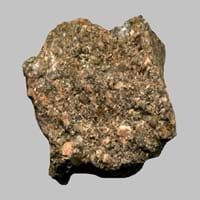Lignite and Arkose
Definition
Definition
Lignite is a soft brownish coal which shows traces of plants and is intermediate between bituminous coal and peat
Arkose is a sedimentary rock, specifically a type of sandstone containing at least 25% feldspar
History
Origin
France
France
Discoverer
Unknown
Alexandre Brongniart
Etymology
From French, Latin lignum wood + -ite1
From Auvergne region of France used by a French geologist Alexandre Brongniart in 1826 who applied this term to some feldspathic sandstones
Class
Sedimentary Rocks
Sedimentary Rocks
Sub-Class
Durable Rock, Soft Rock
Durable Rock, Hard Rock
Family
Group
Not Applicable
Not Applicable
Other Categories
Coarse Grained Rock, Fine Grained Rock, Medium Grained Rock, Opaque Rock
Coarse Grained Rock, Opaque Rock
Texture
Texture
Amorphous, Glassy
Clastic
Color
Black, Brown, Dark Brown, Grey, Light to Dark Grey
Reddish Brown
Maintenance
Less
Less
Durability
Durable
Durable
Water Resistant
No
Yes
Scratch Resistant
No
Yes
Stain Resistant
No
Yes
Wind Resistant
No
No
Acid Resistant
No
Yes
Appearance
Veined or Pebbled
Rough and Dull
Uses
Architecture
Interior Uses
Not Yet Used
Decorative Aggregates, Homes, Interior Decoration
Exterior Uses
Not Yet Used
Paving Stone, Office Buildings
Other Architectural Uses
Not Yet Used
Whetstones
Industry
Construction Industry
for Road Aggregate, Steel Production
Cement Manufacture, Construction Aggregate, for Road Aggregate, Production of Glass and Ceramics, Raw material for the manufacture of mortar
Medical Industry
Not Yet Used
Not Yet Used
Antiquity Uses
Not Yet Used
Artifacts, Sculpture, Small Figurines
Other Uses
Commercial Uses
Electricity Generation
In aquifers, Soil Conditioner, Source of Magnesia (MgO), Tombstones
Types
Types
Xyloid Lignite or Fossil Wood and Compact Lignite or Perfect Lignite
Not Available
Features
Generally rough to touch, Helps in production of Heat and Electricity, Used as fossil fuel
Available in Lots of Colors and Patterns, Generally rough to touch, Is one of the oldest rock
Archaeological Significance
Monuments
Not Yet Used
Not Yet Used
Famous Monuments
Not Applicable
Not Applicable
Sculpture
Not Yet Used
Used
Famous Sculptures
Not Applicable
Data Not Available
Pictographs
Used
Not Used
Petroglyphs
Used
Not Used
Figurines
Not Yet Used
Used
Fossils
Present
Present
Formation
Formation
Coal formation takes place due to accumulation of plant debris in a swamp environment. The Coal formation process continues, as peat turns into lignite brown or black coal at increasing heat and pressure.
Arkose rock forms from the weathering of feldspar-rich igneous or metamorphic rock, most commonly granitic rocks, which are primarily composed of quartz and feldspar.
Composition
Mineral Content
Not Available
Calcite, Clay, Clay Minerals, Feldspar, Micas, Quartz
Compound Content
Carbon, Hydrogen, Nitrogen, Oxygen, Sulphur
Aluminium Oxide, CaO, Iron(III) Oxide, Potassium Oxide, MgO, Sodium Oxide, Silicon Dioxide
Transformation
Metamorphism
No
No
Types of Metamorphism
Not Applicable
Not Applicable
Weathering
Yes
Yes
Types of Weathering
Biological Weathering, Chemical Weathering, Mechanical Weathering
Biological Weathering, Chemical Weathering, Mechanical Weathering
Erosion
Yes
Yes
Types of Erosion
Chemical Erosion, Water Erosion, Wind Erosion
Coastal Erosion, Glacier Erosion, Water Erosion, Wind Erosion
Properties
Physical Properties
Hardness
1
6-7
Grain Size
Medium to Fine Coarse Grained
Coarse Grained
Fracture
Conchoidal
Conchoidal
Streak
Black
White
Porosity
Highly Porous
Highly Porous
Luster
Dull to Vitreous to Submetallic
Dull
Cleavage
Non-Existent
Not Available
Toughness
Not Available
Not Available
Specific Gravity
1.1-1.4
0
Transparency
Opaque
Opaque
Density
800-801 g/cm3
Not Available
Thermal Properties
Specific Heat Capacity
1.26 kJ/Kg K
5
Not Available
Resistance
Heat Resistant
Heat Resistant, Impact Resistant, Pressure Resistant
Reserves
Deposits in Eastern Continents
Asia
Bangladesh, Burma, Cambodia, China, India, Indonesia, Kazakhstan, Malaysia, Mongolia, Pakistan, Turkey, Vietnam
China, India, Kazakhstan, Mongolia, Russia, Uzbekistan
Africa
Botswana, Kenya, Morocco, Mozambique, South Africa, Tanzania
Namibia, Nigeria, South Africa
Europe
Belgium, Bulgaria, England, France, Germany, Greece, Hungary, Kosovo, Netherlands, Norway, Poland, Romania, Serbia, Slovakia, Slovenia, The Czech Republic, Ukraine, United Kingdom
Austria, Denmark, Germany, Great Britain, Netherlands, Norway, Poland, Sweden, Switzerland, United Kingdom
Others
Not Yet Found
Greenland
Deposits in Western Continents
North America
Canada, Mexico, USA
Canada, USA
South America
Brazil, Chile, Colombia, Venezuela
Brazil
Deposits in Oceania Continent
Australia
New South Wales, Queensland, Victoria
New South Wales, New Zealand
All about Lignite and Arkose Properties
Know all about Lignite and Arkose properties here. All properties of rocks are important as they define the type of rock and its application. Lignite and Arkose belong to Sedimentary Rocks.Texture of Lignite is Amorphous, Glassy whereas that of Arkose is Clastic. Lignite appears Veined or Pebbled and Arkose appears Rough and Dull. The luster of Lignite is dull to vitreous to submetallic while that of Arkose is dull. Lignite is available in black, brown, dark brown, grey, light to dark grey colors whereas Arkose is available in reddish brown colors. The commercial uses of Lignite are electricity generation and that of Arkose are in aquifers, soil conditioner, source of magnesia (mgo), tombstones.
|
||
|
||
|










